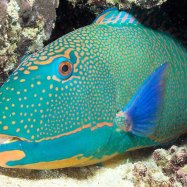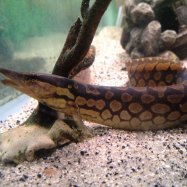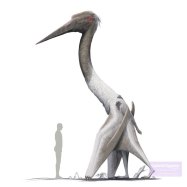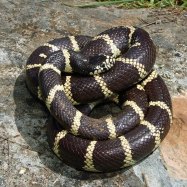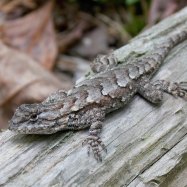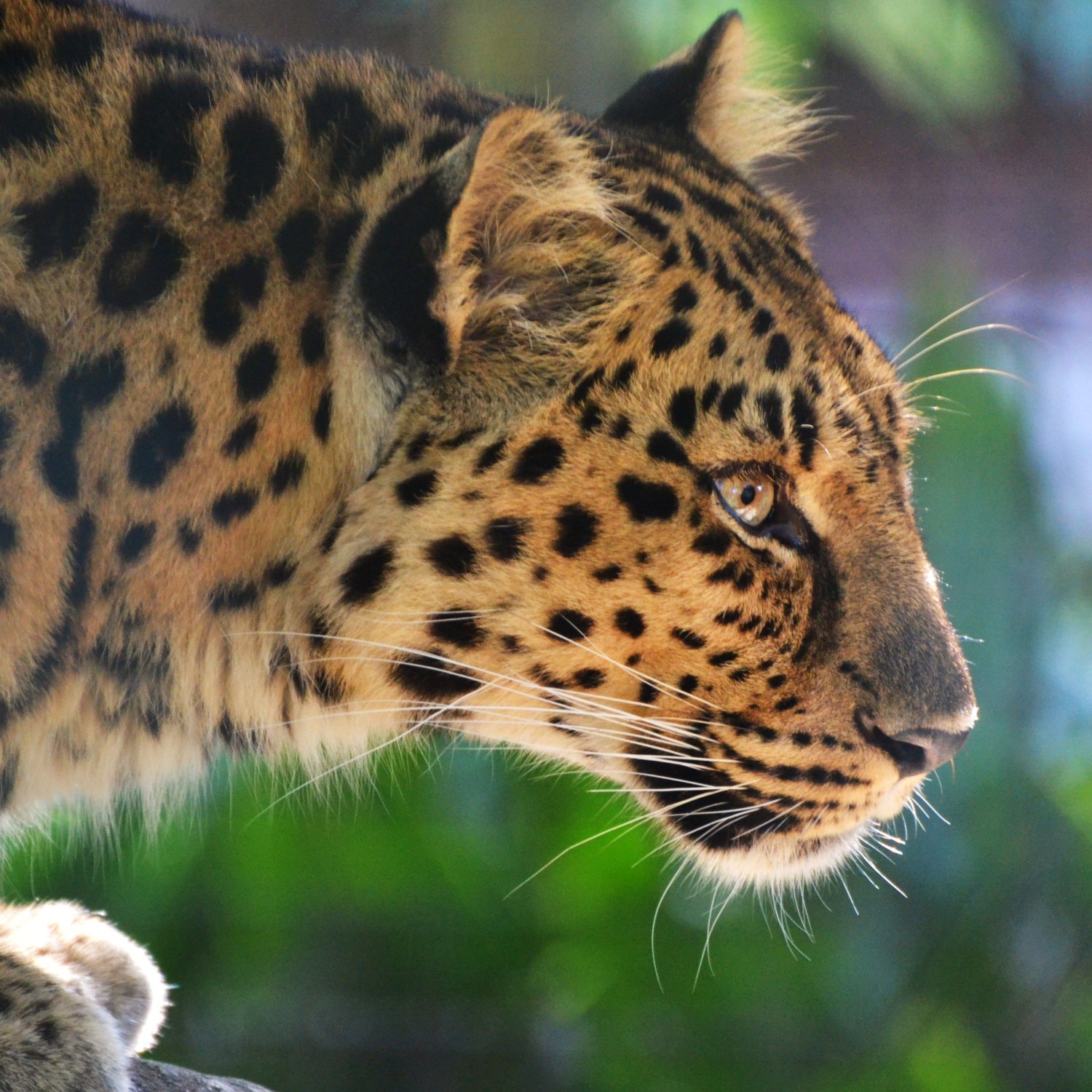
Amur Leopard
1.3 to 1.6 meters
The Amur Leopard, found in the Primorye and Khabarovsk Krai regions, is a stunning and elusive creature. Known for its slim and agile body, this feline, belonging to the Felidae family, can grow up to 1.6 meters in length. Unfortunately, due to habitat destruction and poaching, there are only an estimated 100 Amur Leopards left in the wild. Let's do our part in preserving this beautiful animal.
Animal Details Summary:
Common Name: Amur Leopard
Kingdom: Animalia
Habitat: Temperate Forests
The Rarest and Most Magnificent Big Cat – The Amur Leopard
Deep within the temperate forests of Far East Russia, a sleek creature roams the land, hunting and surviving in a harsh and unforgiving environment. It's no ordinary cat – it's the Amur Leopard, one of the most critically endangered animals on the planet. With only around 100 left in the wild, this magnificent big cat is a true symbol of resilience and the ultimate survivor.Scientifically known as Panthera pardus orientalis, the Amur Leopard is also commonly referred to as the Far East Leopard or the Korean Leopard Amur Leopard. Its striking appearance, unique features, and dwindling population make it a fascinating subject for research and awareness.
The Kingdom of the Amur Leopard
As an animal, the Amur Leopard belongs to the kingdom Animalia, which includes all living organisms that are multicellular, eukaryotic, and heterotrophic. It is also a member of the phylum Chordata, which encompasses animals with a notochord during some stage of their life cycle, a dorsal nerve cord, and a segmented body.More specifically, the Amur Leopard belongs to the class Mammalia, which includes animals that have hair, mammary glands, and three middle ear bones. As a carnivore, it belongs to the order Carnivora, which includes animals that have specialized teeth and claws for hunting and eating other animals.
A Star in the Felidae Family
Within the order Carnivora, the Amur Leopard belongs to the family Felidae, which includes all cats and their closest relatives, such as lions, tigers, and domestic cats. Felidae is the only family within the order Carnivora that consists exclusively of obligate carnivores, meaning that they must eat meat to survive.A Habitat Fit for a Leopard
The Amur Leopard's habitat is mainly in the temperate forests of the Russian Far East, particularly in the Primorye and Khabarovsk Krai regions. These forests are located in the Amur-Heilong Ecoregion, which stretches from the Sea of Japan to the Siberian and Mongolian highlands Archaeotherium.This big cat prefers dense and hilly forests with a variety of vegetation cover and a permanent water source. However, it is a highly adaptable animal and can also be found in other habitats, such as grasslands, taiga, and even urban areas.
A Carnivorous Lifestyle
As a carnivore, the Amur Leopard mainly feeds on other animals. Its diet consists primarily of deer, wild boar, and smaller prey like rabbits, rodents, and birds. This big cat is an apex predator, meaning that it is at the top of the food chain and has no natural predators.The Amur Leopard is a solitary hunter, and unlike other big cats, it is not a group hunter. This means that it hunts and feeds on its own, using its excellent hunting skills to surprise and pounce on its prey. Its sharp and retractable claws, along with its powerful jaws and teeth, make it an efficient predator.
The Far-Reaching Range of the Amur Leopard
The Amur Leopard is primarily found in the Russian Far East, particularly in the Amur-Heilong Ecoregion. However, historical records show that this big cat was once present in Northeast China and the Korean Peninsula. Sadly, due to rampant human activity and habitat destruction, it is now no longer found in these regions.A Rare Gem of Russia
The Amur Leopard is endemic to the Russian Far East, making it a rare gem for the country. Endemic species are organisms that are only found in a particular place or region. In this case, the Amur Leopard is unique to Russia's temperate forests and its surrounding areas.Its limited geographical distribution makes it a critically endangered species, with just a few individuals surviving in the wild. This is why preserving and protecting this big cat is crucial, not just for Russia but for the world.
The Beauty of the Rosettes
One of the most striking features of the Amur Leopard is its coat patterns, which are called rosettes. These rosettes are dark-colored rings with a lighter-colored center, giving the appearance of a spotted coat.Each individual's rosettes are unique, acting as a form of identification for researchers and conservationists. The Amur Leopard's coat not only provides camouflage in its habitat but also makes it a beautiful and elegant creature.
A Slim and Agile Body
Apart from its stunning coat pattern, the Amur Leopard is also known for its slim and agile body. This big cat's body is specially adapted for its hunting lifestyle, with a sleek and streamlined shape that allows it to move quickly and silently through the forest.Measuring around 1.3 to 1.6 meters in length, the Amur Leopard is smaller than other leopard subspecies. Its smaller size and agility make it easier for the big cat to navigate through the dense forests and catch its prey.
A Fight for Survival
The Amur Leopard's dwindling population is a result of human activity, including habitat destruction, poaching, and disturbance. As human settlements and infrastructure continue to expand and encroach on the Amur Leopard's habitat, the chances of survival for this species decrease.Poaching remains a significant threat to the Amur Leopard. Its coat is highly prized, and there is a constant demand for it in the illegal wildlife trade market. The loss of its prey due to overhunting and deforestation also puts the Amur Leopard at risk of starvation.
Conservation Efforts for the Amur Leopard
The Amur Leopard is classified as critically endangered by the International Union for Conservation of Nature (IUCN). This means that it faces an extremely high risk of extinction in the wild. However, various conservation efforts have been implemented to protect and increase the Amur Leopard population.One of the most significant conservation efforts is the establishment of protected areas in the Amur-Heilong Ecoregion. These areas, such as the Amur Leopard National Park, provide a safe habitat for the big cats and other endangered species.
Additionally, various projects and partnerships focus on raising awareness and educating the local communities on the importance of preserving the Amur Leopard and its habitat. These efforts also aim to reduce poaching and encourage sustainable practices that benefit both humans and wildlife.
The Hope for the Future
Despite its critical situation, there is still hope for the Amur Leopard's survival. In recent years, there has been a slight increase in its population, with the current estimates at around 100 individuals. This is a positive sign that the conservation efforts are making a difference.Furthermore, advancements in technology, such as camera traps and genetic analysis, have aided researchers and conservationists in monitoring and understanding the Amur Leopard population. As more data is gathered, there is a better chance of implementing effective conservation strategies.
The Amur Leopard – A True Symbol of Resilience
In conclusion, the Amur Leopard is a rare and magnificent creature that embodies resilience and strength. Despite facing numerous threats, this big cat continues to survive and adapt in its harsh environment. It is our responsibility to ensure that this beautiful animal remains a part of our planet for generations to come. Let us continue to learn about and appreciate the Amur Leopard and support its conservation efforts.

Amur Leopard
Animal Details Amur Leopard - Scientific Name: Panthera pardus orientalis
- Category: Animals A
- Scientific Name: Panthera pardus orientalis
- Common Name: Amur Leopard
- Kingdom: Animalia
- Phylum: Chordata
- Class: Mammalia
- Order: Carnivora
- Family: Felidae
- Habitat: Temperate Forests
- Feeding Method: Carnivorous
- Geographical Distribution: Far East Russia
- Country of Origin: Russia
- Location: Primorye and Khabarovsk Krai regions
- Animal Coloration: Rosettes with a light center and dark borders
- Body Shape: Slim and agile
- Length: 1.3 to 1.6 meters

Amur Leopard
- Adult Size: Large
- Average Lifespan: 10 to 15 years
- Reproduction: Sexual
- Reproductive Behavior: Polygamous
- Sound or Call: Soft noises
- Migration Pattern: Sedentary
- Social Groups: Solitary
- Behavior: Nocturnal
- Threats: Habitat loss, poaching, climate change
- Conservation Status: Critically Endangered
- Impact on Ecosystem: Top predator
- Human Use: Hunted for fur
- Distinctive Features: Long legs and thick fur
- Interesting Facts: The Amur leopard is the rarest big cat in the world, with less than 100 individuals remaining in the wild
- Predator: No natural predators
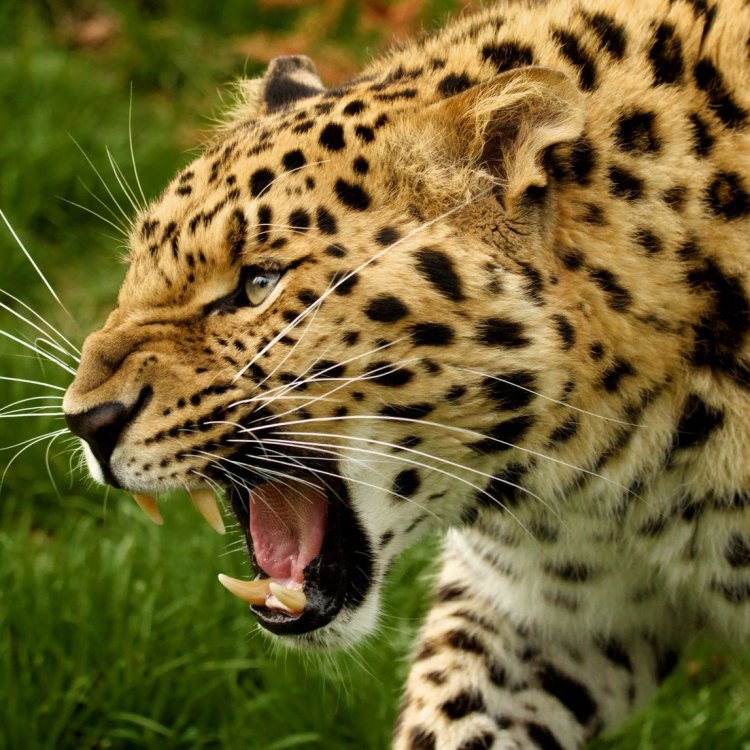
Panthera pardus orientalis
The Amur leopard: The Rarest Big Cat in the World
Imagine walking through a dense forest in eastern Russia, in the Land of the Leopard National Park, and suddenly coming across a majestic creature – the Amur leopard. With its long legs and thick fur, it is hard not to be in awe of this magnificent animal. But did you know that the Amur leopard is the rarest big cat in the world, with less than 100 individuals remaining in the wild? In this article, we will explore the unique features and behavior of this critically endangered species and understand its role in the ecosystem.Adult Size and Average Lifespan:
The Amur leopard is the largest member of the leopard family and is also known as the Far Eastern leopard PeaceOfAnimals.Com. It is one of the subspecies of the Eurasian leopard, found in the Amur-Ussuri region of eastern Russia. It is a big cat, with an average adult size of around 4-5 feet in length and weighing between 70-110 pounds. However, there have been some recorded cases of Amur leopards reaching up to 7 feet in length.
Despite its large size, the Amur leopard has an average lifespan of only 10 to 15 years, with some individuals living up to 20 years in captivity. Like most big cats, they have a short lifespan due to the threats they face in the wild.
Reproduction and Reproductive Behavior:
The Amur leopard is a sexual species, with males and females coming together only during the breeding season. The mating rituals of these cats are fascinating to observe, as they involve a lot of chasing and play fighting. Interestingly, the reproductive behavior of Amur leopards is polygamous, where one male mates with multiple females.
After a gestation period of around 90-105 days, the female gives birth to a litter of 2 to 4 cubs in a secluded den Airedoodle. The cubs are born with their eyes closed and are completely dependent on their mother for survival. The mother takes great care of her young, providing them with food and protection until they are old enough to venture out on their own.
Sound or Call and Migration Pattern:
Unlike other big cats, Amur leopards are not known for their loud roars. Instead, they communicate with each other through soft noises, such as purring, growling, and hissing. These sounds are mostly used for territorial communication or during the mating season.
Amur leopards are mainly sedentary animals, meaning they do not migrate over long distances. They establish and defend their territories, which can range from 15-40 square miles, depending on the availability of resources. These solitary creatures prefer to live and hunt alone, except during the breeding season.
Behavior and Threats:
Amur leopards are nocturnal animals, meaning they are most active during the night. They spend their days resting in dense vegetation, trees, or abandoned caves. As solitary animals, they only come together during the breeding season and prefer to hunt alone, making them stealthy and efficient predators.
However, despite being top predators in their ecosystem, Amur leopards face numerous threats, which have led to their critical endangerment. The primary threat is habitat loss, as their natural habitat is being destroyed due to human activities, such as deforestation and urbanization. This also leads to a decrease in their prey availability, forcing the leopards to scavenge or turn to domestic livestock for food.
Additionally, they are also victims of poaching, as their thick fur is highly valuable in the illegal wildlife trade. Climate change is another major threat to their survival, as it has led to changes in their natural habitat and affected their prey populations.
Conservation Status and Impact on the Ecosystem:
Due to these threats, the Amur leopard is listed as critically endangered on the IUCN Red List, with less than 100 individuals remaining in the wild. Many conservation efforts have been put in place to protect these magnificent animals, such as setting up national parks and reserves, educating local communities, and implementing strict laws against poaching.
The Amur leopard plays a crucial role in its ecosystem as the top predator. Its presence helps to maintain a balance in the food chain, keeping the population of its prey in check. This, in turn, helps to maintain healthy and diverse ecosystems, essential for the survival of other species.
Human Use and Distinctive Features:
Unfortunately, humans have also played a significant role in the decline of the Amur leopard population. These animals have been hunted for their fur for centuries, and their populations have also been affected due to human-wildlife conflicts. Despite being a protected species, illegal hunting and habitat destruction continue to threaten their survival.
Distinctive features of the Amur leopard include its long legs and thick fur. These adaptations help them survive in their harsh, cold habitat, where temperatures can drop to -40 degrees Celsius. The fur also has a unique pattern, with larger and more widely spaced rosettes, giving it a more silvery appearance compared to other leopard subspecies.
Interesting Facts and Mysterious Predator:
Here are some interesting facts about the Amur leopard that reflect its unique characteristics and behavior:
- The Amur leopard is the rarest big cat in the world, with less than 100 individuals remaining in the wild.
- It is also the only leopard subspecies adapted to live in cold, snowy regions.
- Unlike other big cats, Amur leopards are excellent climbers and can drag their prey up into trees to keep it safe from other predators.
- They are also known to swim across frozen rivers in search of food or to disperse into new territories.
- Amur leopards have no natural predators, as they are the apex predator in their ecosystem.
The Amur leopard, with its elusive and solitary behavior, remains a mysterious predator. However, our actions have put this magnificent species at the brink of extinction. It is our responsibility to protect and conserve these animals, not just for their sake, but for the sake of our planet's biodiversity. We must work towards creating sustainable solutions that will allow the Amur leopard to thrive in its natural habitat for generations to come.
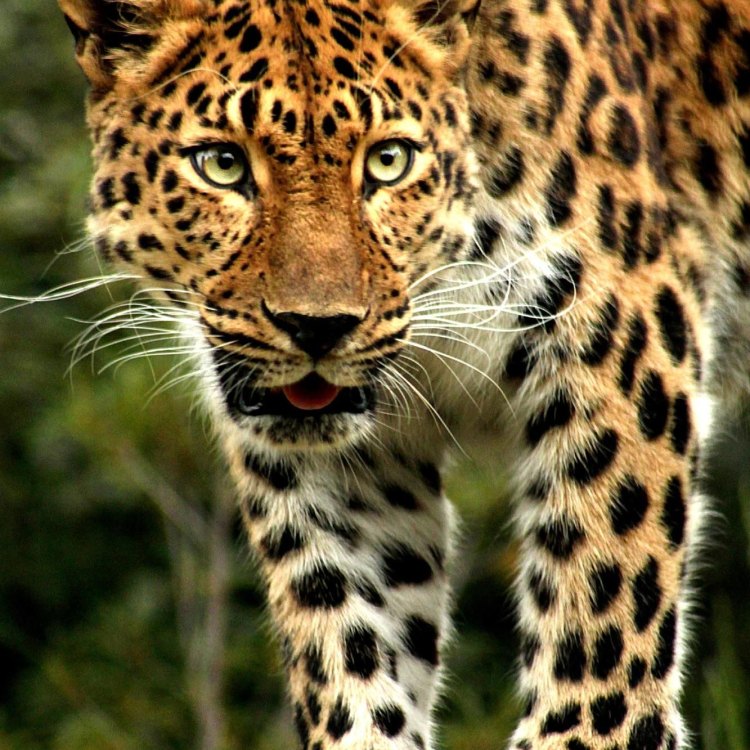
The Rarest and Most Magnificent Big Cat – The Amur Leopard
Disclaimer: The content provided is for informational purposes only. We cannot guarantee the accuracy of the information on this page 100%. All information provided here may change without prior notice.



